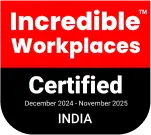

Canal lining is changing the way India saves water. Old canals leak a lot of water. This causes low flow, weak crop cycles, and financial losses. Today, more engineers and state departments are seeking durable canal lining solutions that reduce seepage.
YOOIL Envirotech has taken a lead in this space with its Bituminous Geomembrane system. It works on tough soil, long canal routes, and large irrigation networks. The best part is that it is made for Indian site conditions. Below are real case studies based on projects listed on the YOOIL project page and known tender work in those regions.
Let us walk through real examples and what we can learn from them.
Case Study 1
The Pench canal is an important lifeline for farms around Nagpur. Parts of the canal had high seepage. Water loss was a major problem in the dry months. Farmers received less water at the tail ends.
YOOIL Envirotech worked on the Left Bank Canal from the 4 km mark to the 4.9 km mark. The team used Bituminous Geomembrane canal lining sheets that bonded well with the base. The goal was to stop seepage, improve flow, and stabilise the canal bed.
Small stretches can also make a big difference when done correctly. Fixing the worst patches first improves the entire canal system.
Case Study 2
Theonthar Canal supports a large part of the irrigation belt in Rewa. Many sections saw slow water flow because the soil was porous. Repairs using cement had failed a few times.
YOOIL used BGM to create a flexible lining. The lining settled well on uneven soil. This helped reduce water waste and kept erosion in check.
Canal lining types that combine strength with flexibility work best on mixed soil structures. BGM showed this clearly here.
Case Study 3
The Upper Wardha project is part of a major irrigation plan. The Right Bank Canal carries a huge volume of water. A few parts had deep cracks and seepage zones. Heavy water pressure made the problem worse.
YOOIL Envirotech worked on selected patches that needed urgent attention. BGM lining helped seal the cracks. It also stopped further erosion under the canal surface.
Not every canal needs full-length lining. Patch-based lining can be smart and cost-effective when seepage is limited to certain spots.
Case Study 4
The Paithan canal helps farms in many small villages near Aurangabad. Water leaks in many of its older sections used to slow the supply.
YOOIL Envirotech applied BGM to improve water flow. The lining covered weak spots and uneven surfaces. Farmers reported better supply in the following season.
Heat-resistant canal lining types are very important in regions with high summer temperatures. BGM proves to be a solid choice.
These projects show how canal lining solutions can change water use. The work covers different soil types, climates, and canal sizes. YOOIL Envirotech uses a method that fits each site's problem. BGM works well where cement lining breaks or slips. It bends and holds the ground tightly.
These real examples tell us a few clear points:
India has many old canals. Most of them need fresh lining. The success of these sites tells us that better materials can save millions of litres of water every year.
Different types of canal lining work for different ground conditions. BGM works well where soil movement is high.
Many canals do not need full-length lining. Repairing the worst parts first is smart and cost-friendly.
India has long summers. Canal lining must stay stable in the heat. Bituminous-based systems do well in high temperatures.
Fast lining reduces shutdown time. Water supply continues without long delays.
Good lining should last many years. This reduces repair costs and avoids repeated work.
Here is a simple breakdown of the main canal lining types in India:
Among these, BGM has grown fast. It blends strength, flexibility, and long life. It also works on slopes, curved areas, and damaged beds.
YOOIL Envirotech brings together global field experience and Indian site readiness. The BGM system has been tested on many terrains. It stays strong under pressure. It handles both heat and soil stretch. The joining method is simple and secure. This makes the canal ready quickly.
The company also focuses on long-term results. The real project sites show better flow, less seepage, and more stability. With many more irrigation projects planned, canal lining will play a big role.
It is the process of covering the canal surface with a material that stops seepage and improves water flow.
It is strong, flexible, heat-stable, and works well on uneven or cracked surfaces.
With proper installation, it can last many years with very little maintenance.
No. Many canals only require patch lining in areas with high seepage.
Concrete, stone masonry, plastic lining, and BGM. The choice depends on soil, climate, and budget.
